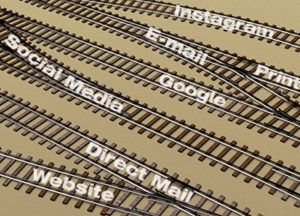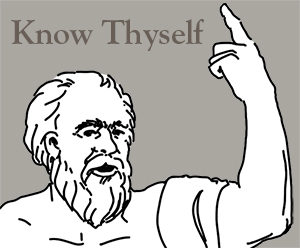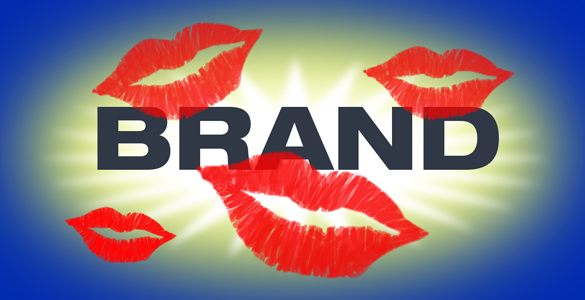Doug Zanger @zanger writes an excellent article on how Taco Bell stokes flames of fan love. But, what does love have to do with a B2B brand?
Zanger’s piece talks about how “Strong opinions from consumers can be both a blessing and a curse.” But the same analysis actually holds true for B2B “consumers” – the facility managers, architects, engineers, designers and everyone else in the value-chain of a B2B product going to market. A failure in the field of a product (i.e., comments on social media about a consumer brand), for example, can ruin the B2B manufacturer’s chances of future projects, not on social media, but in the value-chain itself.
B2B consumers talk to each other and they don’t necessarily use social media to do the talking. In fact, our sister company’s research (Accountability Information Management, Inc.) has shown that one of the key ways B2B people get information about products is from their peers! You can get a copy of their latest report on how facilities team up with outside services by requesting it on the website. For example, here’s a clip from their report addressing this issue:
“Facilities use a variety of methods to find architect/engineer firms to help them with a particular project or service they need. The AIM research indicates the method used by the higher percent of respondents is recommendations from peers/associates. Facility management people talk to each other on what works or doesn’t work. The reason they use this method is because it provides them with the most honest feedback on a firm’s performance and the quality of work.”
When Zanger says that tough feedback is a way for a brand, “especially in a hyper-competitive category to improve,” his analysis about B2C transcends into B2B. People talk.
What are some of the lessons we can take from his study of what Taco Bell does and how a B2B company can get the love going?
- Being open to discourse. This means being open and respecting the channels the audience is using at the moment. In B2C, those channels are often Facebook, Instagram, etc. But, in B2B, it’s not necessarily the same. For example, magazines have been hit hard by the internet and digital/programmatic advertising. Historically, magazines were the key channel of the B2B world in discourse (though often one way, the B2B professionals would discuss the magazine’s content between themselves). And so was the sales representative channel, who would often call on the value-chain participants to “present” the products. Today, 70% of B2B people get their information from Google searches BEFORE they even talk to a rep or read a magazine. What is the B2B brand doing to accommodate that behavior? The fact is, they are doing nothing, really. Most B2B companies continue down traditional roads and end up losing contact with their prime audiences. One of the key differentiations between B2C and B2B is the word “audience.” In B2C, you have one audience: consumers. And while you can break that down demographically, as you can with any main category, a consumer is a consumer. In B2B, the word is “audiences,” plural. Because in B2B, there are many audiences who influence the product’s path to purchase. That makes “discourse” very difficult, as each of the audience’s needs are different. It’s like speaking different languages; a B2Bmarketer has to be proficient in many audience languages. Just recently, as an example, we created a media schedule that included blocks of print that were purchased more out of habit despite our analysis. There was no proof that the audience being aimed at received their content more in print more than other channels. Sometimes, it’s just more “convenient” to do things the way things have been done. But, that doesn’t change the facts: audiences are channel jumping more than ever before. They are, in fact, using mutli-channels.
- Understanding the transition from the 30-second spot to social and digital is important. In B2B, which rarely used traditional TV, you can substitute “print” for the 30-second spot and you’ve got the formula of change. It isn’t that print is no lon
 ger viable. It is, but it has shifted from a primary to a secondary channel – something many publishers still struggle with. E-mail marketing, digital outreach, combined with traditional print, direct mail now have reversed roles (i.e., in the past, you ran a print ad, and followed up with support tactics, but now, you use your support tactics as the lead and back it up with print). As simple as this sounds, B2B CMOs have a difficult time making the transition. Change is always difficult, isn’t it? For example, Zanger says that while broadcast is still important, it is better when it is inclusive. However, “it can be shallow and more transactional in nature.” Digital, by comparison, works best with narrow messaging, but it’s deeper, “driven by an original brand personality and a bit of vulnerability.” In B2B, print is the same as broadcast, and digital goes deeper, but B2B does not necessarily use the same digital channels as B2C. E-mail is much more important in B2B than, for example, Facebook, simply because the B2B audiences are on that e-mail channel more than they are on social ones. At the same time, if you are trying to reach interior designers, Instagram would be a digital preferred channel that goes “deeper” than, say, an interior design magazine. The point is to use both as appropriate to the objective of your campaign.
ger viable. It is, but it has shifted from a primary to a secondary channel – something many publishers still struggle with. E-mail marketing, digital outreach, combined with traditional print, direct mail now have reversed roles (i.e., in the past, you ran a print ad, and followed up with support tactics, but now, you use your support tactics as the lead and back it up with print). As simple as this sounds, B2B CMOs have a difficult time making the transition. Change is always difficult, isn’t it? For example, Zanger says that while broadcast is still important, it is better when it is inclusive. However, “it can be shallow and more transactional in nature.” Digital, by comparison, works best with narrow messaging, but it’s deeper, “driven by an original brand personality and a bit of vulnerability.” In B2B, print is the same as broadcast, and digital goes deeper, but B2B does not necessarily use the same digital channels as B2C. E-mail is much more important in B2B than, for example, Facebook, simply because the B2B audiences are on that e-mail channel more than they are on social ones. At the same time, if you are trying to reach interior designers, Instagram would be a digital preferred channel that goes “deeper” than, say, an interior design magazine. The point is to use both as appropriate to the objective of your campaign.
- Negative can be a positive too. It’s called listening, and then adapting. For example, we did an e-mail campaign for a client that resulted in one of our programmers running into my office saying there’s an irate engineer on the phone complaining about receiving the e-mail we just sent. I took the call, and the engineer said, “Where the BLANK did you get my name?” I apologized and told him that he would be removed immediately from our lists, but he demanded to know where we got his name. I told him and there was an immediate silence. “Jim, I can’t thank you enough. I’ve been getting bombarded by e-mails recently, and no one was willing to tell me anything.” We had a five minute conversation about the ins and outs of e-mail, his job and so on. It ended this way: “Oh, by the way, I’m not the guy you’re looking for. The guy you want is so-and-so, and his e-mail is ____. Good speaking with you.” The name he gave us for our client was the director of operations for one of the major retailers in the country (who we though was him). We targeted that person because of the amount of construction projects we had detected that were going on with their company. Listening and not going into crisis mode all the time often delivers rewards you haven’t dreamt of.
- Know your brand identity so well you’re not trying to be everything to everyone; just stay true to who you are. Socrates said, “Know Thyself.” Truer words in
 communications – whether B2C or B2B – can’t be overstated. We have seen clients repeatedly get hammered when they leave their core competencies behind. This is not to say that innovation or brand extensions are wrong. However, when you abandon your core – who you are – it inevitably leads to unforeseen problems. In one instance, we had a client that wanted to penetrate a new market. After research, we told them, “It’s not worth it.” We explained why, but the client was determined. After all, they were the powerhouse in their market. Why not this one with their new product? We reminded them that the new product was not their core competency. “We want the annuity,” they said. “We will do this.” Unfortunately, after two years and millions of dollars, they abandoned their effort. It was a total bust. Why did this happen? They left their core competency on the floor and entered a world where the competency they wanted to gain (annuity) was owned by three other companies much larger than our client’s. Simply, those companies were not going to “give way” to another company entering into their turf.
communications – whether B2C or B2B – can’t be overstated. We have seen clients repeatedly get hammered when they leave their core competencies behind. This is not to say that innovation or brand extensions are wrong. However, when you abandon your core – who you are – it inevitably leads to unforeseen problems. In one instance, we had a client that wanted to penetrate a new market. After research, we told them, “It’s not worth it.” We explained why, but the client was determined. After all, they were the powerhouse in their market. Why not this one with their new product? We reminded them that the new product was not their core competency. “We want the annuity,” they said. “We will do this.” Unfortunately, after two years and millions of dollars, they abandoned their effort. It was a total bust. Why did this happen? They left their core competency on the floor and entered a world where the competency they wanted to gain (annuity) was owned by three other companies much larger than our client’s. Simply, those companies were not going to “give way” to another company entering into their turf.
- Pursue ideas that lead to great insight, great learning and then ultimately improve your community. This is true of any endeavor, not just B2C, but it is especially true in B2B because of the number of audiences. Simply put, what works for one will not work for another and usually doesn’t. Learning companies experiment and are often rewarded with remarkable discoveries. For example, one of our clients decided to sponsor an event that pulled in designers who specified and recommended their product. The event – a day-long presentation by a noted designer – was promoted as a learning event. After we were asked how we might “promote” the event, we began with trying to figure out the ROI of any promotion we might recommend. ROI is always important in your analysis of an idea. We hatched a strategy to direct mail designers from our lists in the specific area where the event would be held, and offered (as a sponsor they would be able to waive the $250 fee the event owner was charging for attending) the person a “free” pass to the event. After two of these events, the owner of the event begged us to stop because we were taking away his revenue stream: our direct mail campaign was filling up the seats and causing the event owner to “cry uncle.” He simply wasn’t making money. We didn’t stop, of course, because offering “free” passes was part of the sponsorship contract. No one had thought about that kind of outreach was possible (especially the event owner). We immediately saw the opportunity. While ideas don’t all work out as well as this, even the ones that don’t teach us something!
- Don’t overtly command a channel with ‘Hey, look at me!’” Be a contributor to that specific community. In B2B especially, it is often better to give than receive. And because B2B is so complex, you often can’t trace the reason something happens, either positive or negative. Tweeting for tweeting sake doesn’t work; nor does posting “feel good” posts. Any channel – including traditional ones like PR, direct mail and advertising – require follow up. Conversation, not a monologue, but a dialogue.
- If you fail, fail fast and keep going. This is the “Ready, Aim, Fire” being changed to today’s “Ready, Fire, Aim and Fire Again.” Zanger pointed out that it’s important to be “in line” with the brand guidelines, which enable such interactions to take place. In B2B, it’s even more important. For example, take pricing. Unless pricing is in line across all your channels, a company can get into a sticky situation. One of our client’s largest distributor customers purchased a smaller distributor (also a customer of our client) a few years ago. Upon examining the books, our client’s larger distributor found out that our client was giving the smaller one a deeper discount – a situation that exploded and put the business between them in jeopardy. It took over a year to untangle the mess. It cost our client hundreds of thousands of dollars. The way out of that situation was to have your ducks in a row to begin with: to be “in line” with your strategies from the get go.
Overall, B2B is not B2C, but what we can learn from each channel is immense. In fact, both are complex and as the world becomes even more splintered, we have to get into the habit of taking what works in one, modify it for our own use, and then see if it works or not. If at first you don’t succeed…you get the picture, don’t you!
Let us hear from you! Thanks for reading this.
